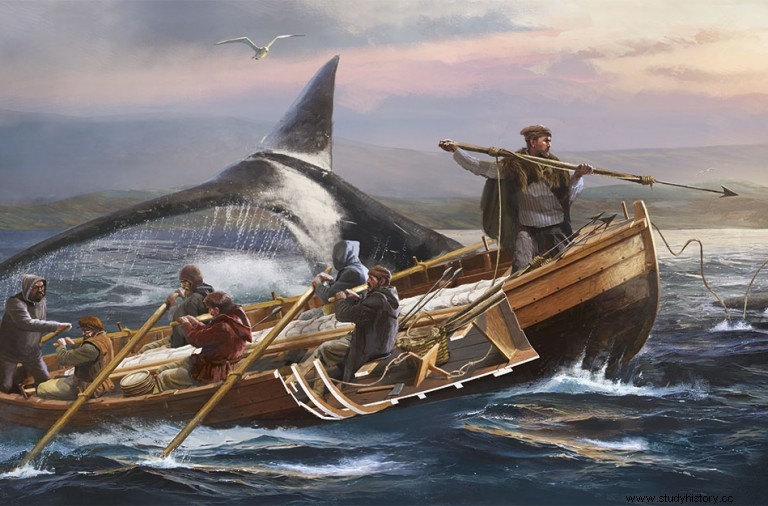On April 22, 2015, Jonas Gudmunsson, Sheriff of the Wesfjords (Iceland), symbolically repealed a law, still in force because it was never formally enacted, that allowed Basques who entered the area to be killed with impunity. And all because of something that happened in this northwestern region of the country in 1615, when of the 80 crew members (mostly Basque) of three whalers that had left San Sebastian, 31 died at the hands of the Icelanders. This event, even today with many shadows, was called «the massacre of the Spaniards » (Spánverjavígin).
When the whales began to be scarce in the Bay of Biscay, Basque fishermen went to Asturias and Galicia to fish. From there, and following the cetaceans and the cod, they entered the Atlantic to the Labrador Sea and established a base on the island of Newfoundland (today, Canada). During the 16th century, their art in harpooning and handling the small boats in which they approached the whales made them the best whalers in the world, to the point of almost taking over the monopoly of whale oil, the precious fuel of the time. In expeditions that could take up to nine months, they would go to sea, with hardly any chance of going ashore, living, hunting and sleeping in those large, uncomfortable and smelly floating warehouses. Exposed to storms and the dangers of the sea, they were especially afraid that the ice would show up before the job was done and they would not be able to return home, forcing them to spend the harsh winter there.

At the beginning of the XVII, and already with the competition of other whalers, such as the English and Dutch, they extended their area of action to Iceland, where commercial treaties were signed and another whaling base was established. Everything went smoothly, even creating a jargon of its own between locals and whalers mixing Basque and Icelandic terms, until... September 1615. As on other occasions, three whalers came to fish in the Westfjords, did their job, loaded their cellars and prepared to return. On the day of returning home, a great storm arose that caused the three ships to run aground. Fortunately for the crew, most of them, about 80 sailors, managed to survive the shipwreck and reach the coast. They decided it was best to spend the winter there and find a way to get home in the spring. And this is where things get complicated, and versions differ. Apparently, it was a particularly harsh winter, food was scarce, and conflicts began between the sailors and the local population.

It is said that, after the theft of food from some sailors, the local peasants, who also had dogs, led by Ari Magnússon , the bailiff or sheriff of the area - come on, the one who cut the cod - assaulted the Basque camp and took revenge by killing 12 sailors. And the thing did not stop there, but the law was enacted that allowed Basques to be killed and they ended up with 19 more. It seems that the rest were able to flee and embark on an English ship. That bloody episode became known as Spánverjavígin , «the massacre of Spaniards», the first and only? massacre reported in Iceland. A story with many chiaroscuros, especially in relation to the spark that lit the fuse. It is logical to think that, with hunger in between, there could be disagreements between the local population and sailors, but from there to the peasants perpetrating a massacre, very complicated. So, the figure of Ari Magnússon as the instigator, taking advantage of these disagreements, and maintainer of the crime, through the enactment of a law, for some economic issue, whether it was a debt -«dead the dog (creditor), the rage (debt) is over "- or to seize the precious loot from their cellars.
Be that as it may, and although there has been no news of any murder in the area of someone just because they are Basque, since 2015 they can already wander and visit that majestic place... without any fear.
